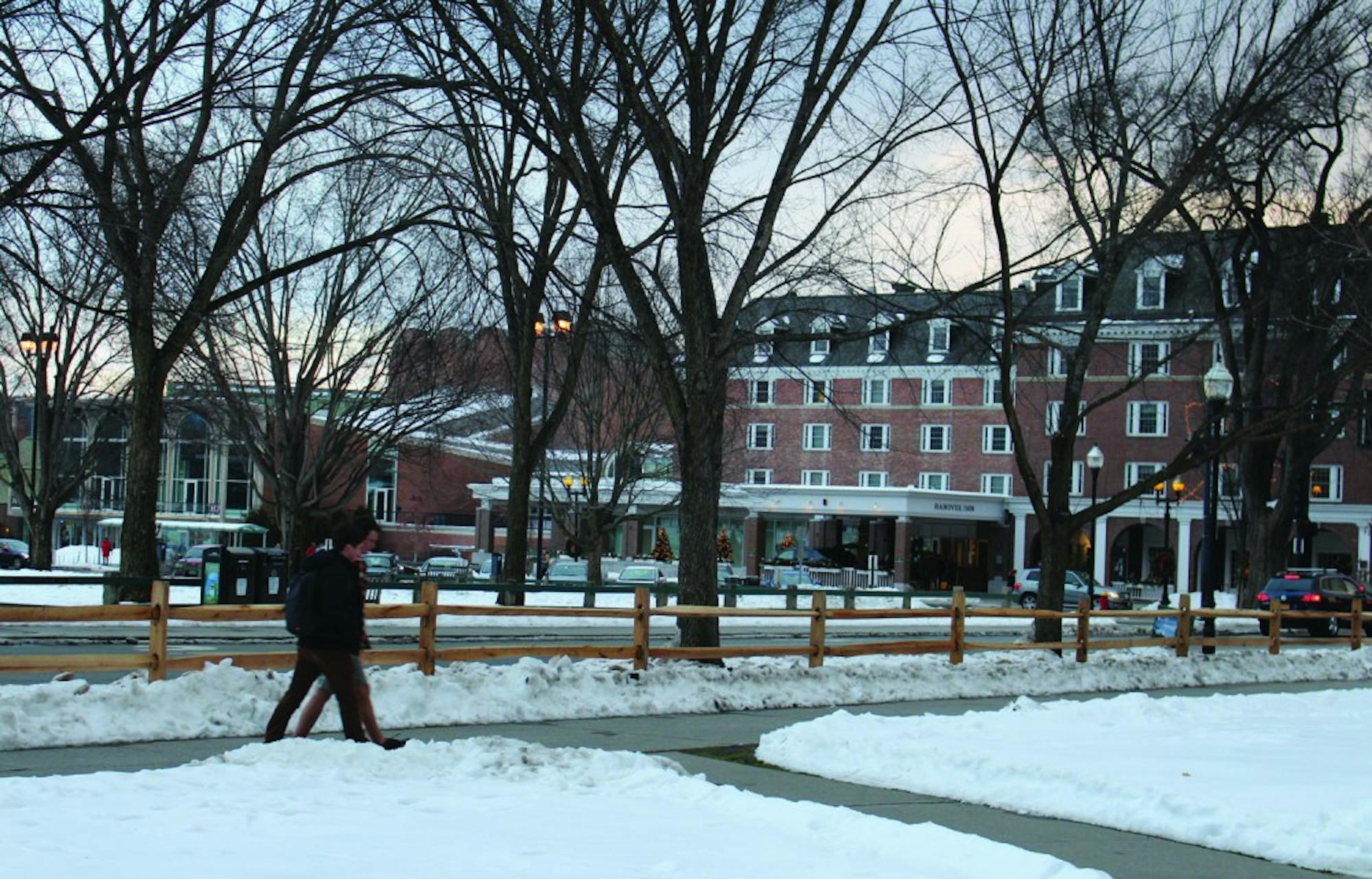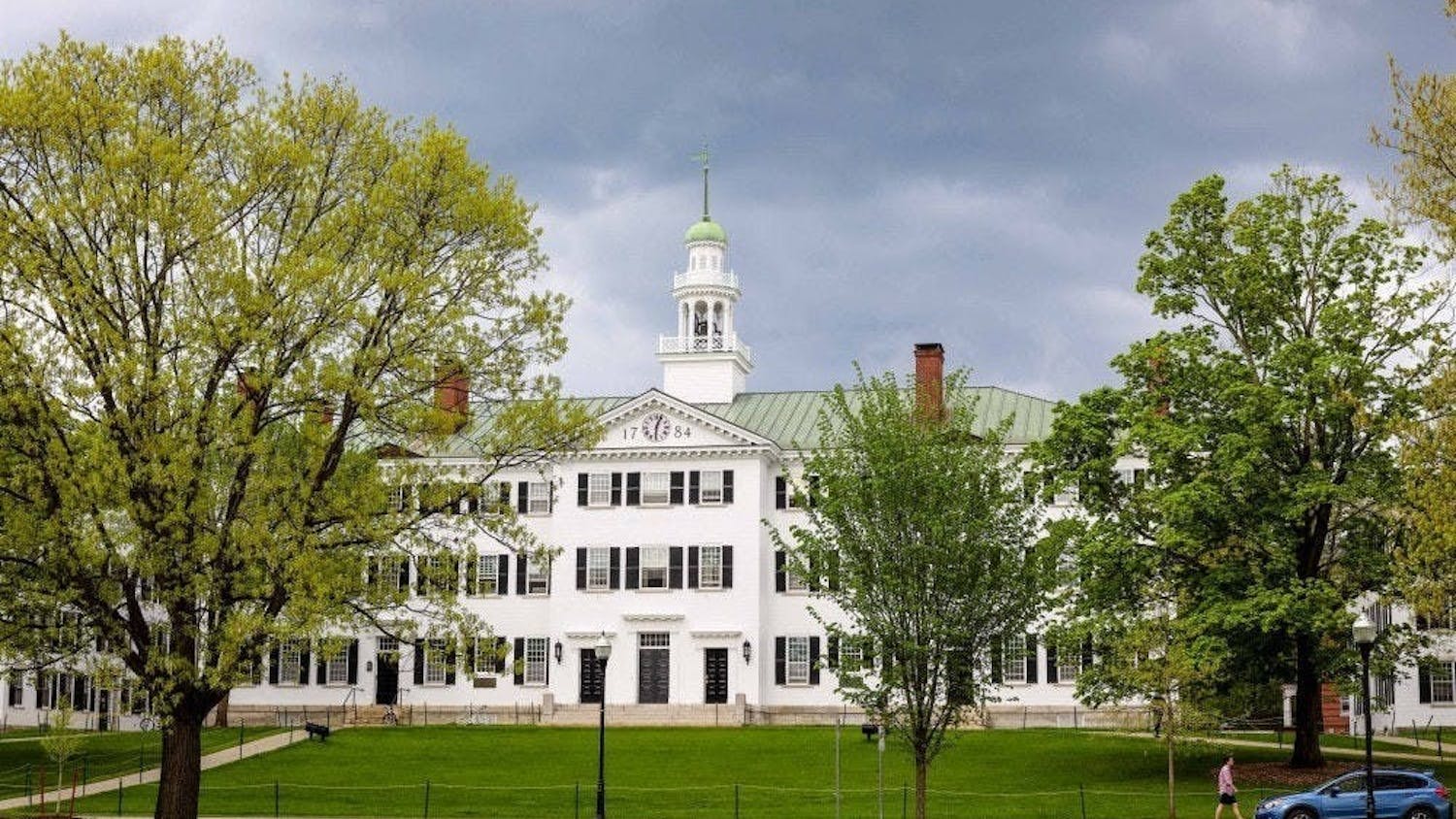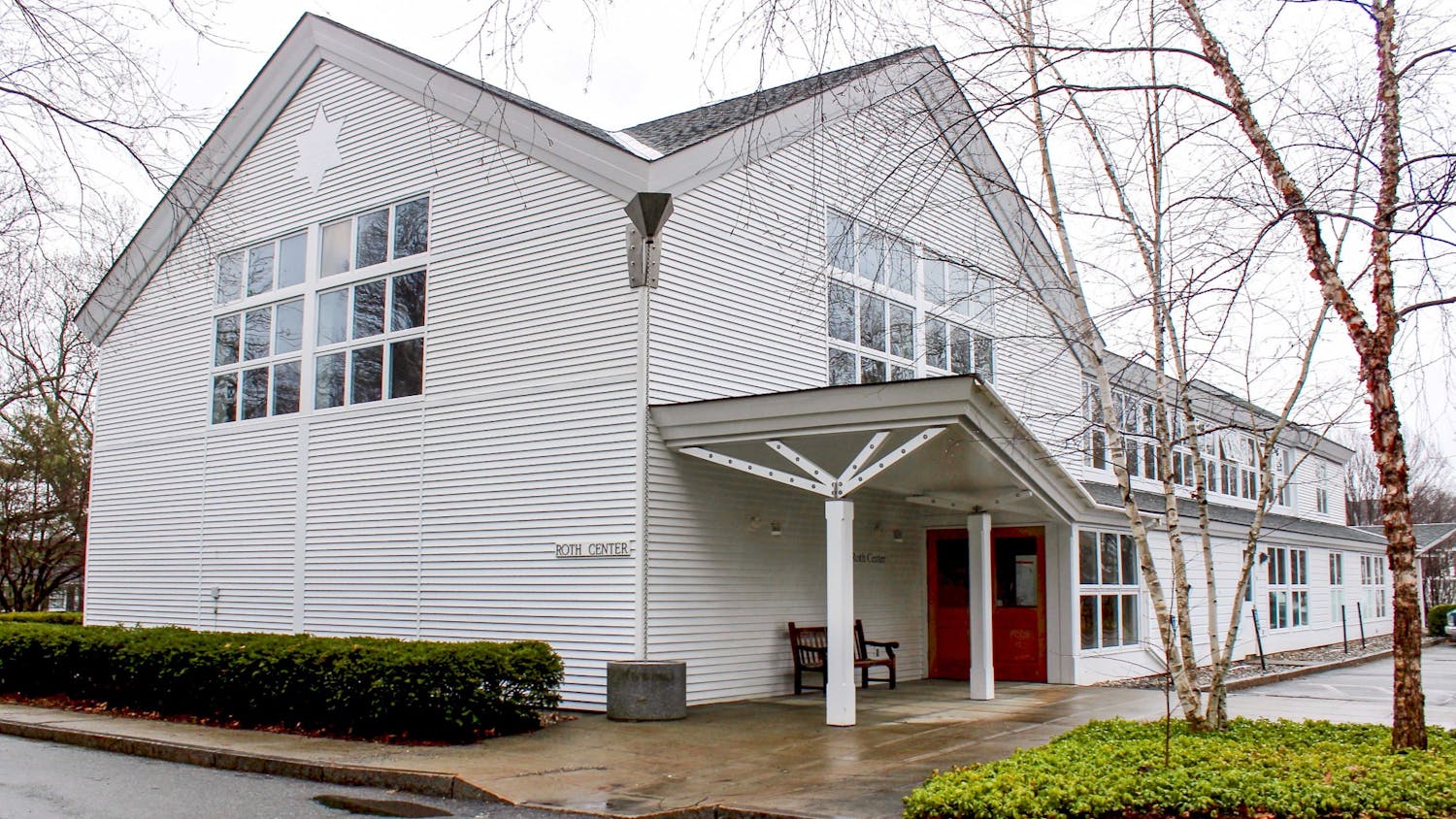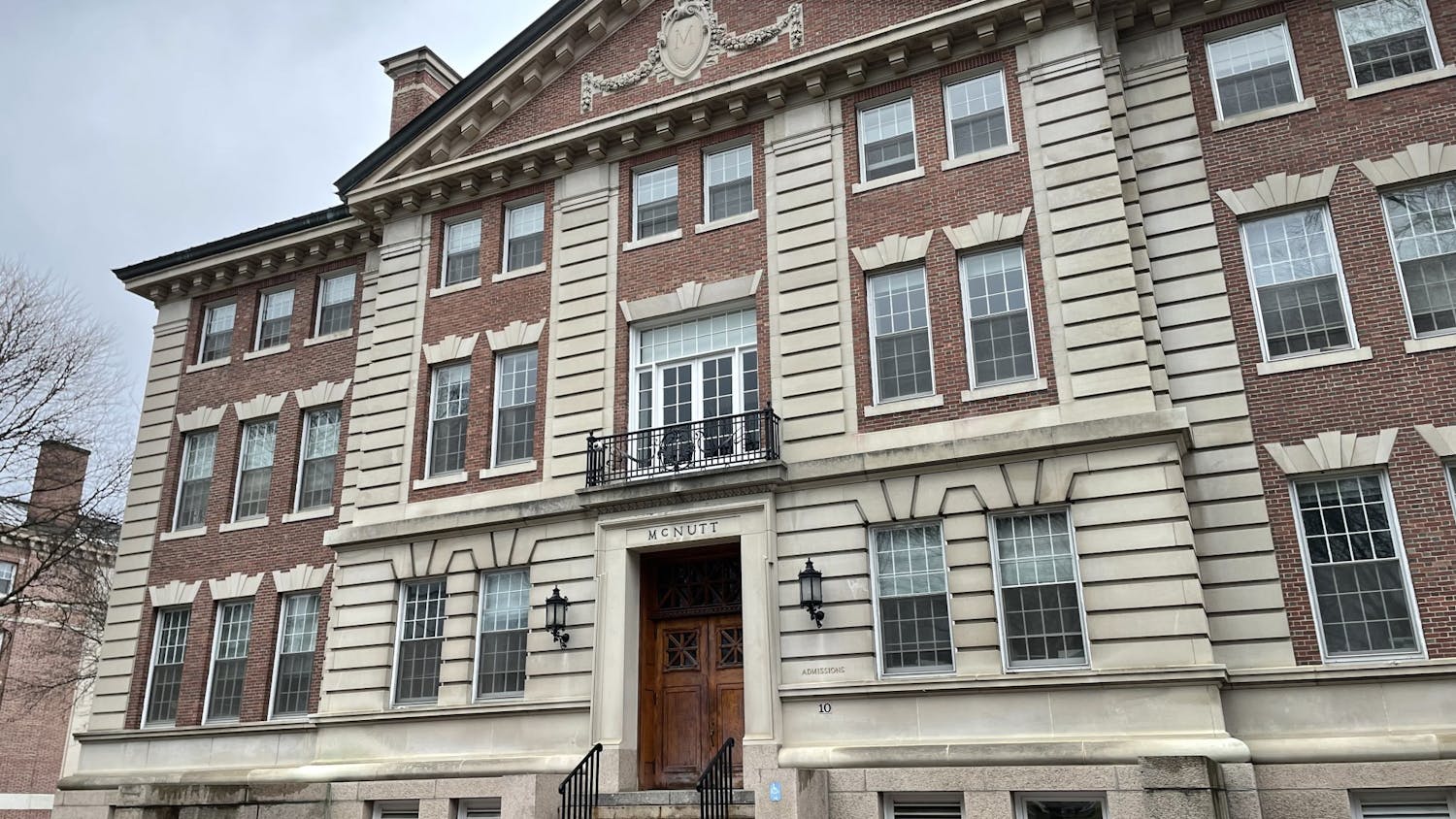In response to complaints about jaywalking – a common sight at the College – the town of Hanover erected a fence in front of the Collis Center over the winter interim to divert pedestrians towards approved crosswalk, according to Hanover town manager Julia Griffin.
The fence, made of unfinished split rails, runs along the sidewalk in front of Collis and Robinson Hall, between the two approved crosswalks connecting the buildings with the Green.
“The fence is designed to now really force pedestrians to cross at the two safe crossing locations,” Griffin said.
She noted that the number of people jaywalking between Collis and the Green has worried the town, given the amount of vehicular traffic in the area.
“We had enough near misses with pedestrians versus cars,” she said.
Plans to build the fence began last spring, Griffin said, after the town received numerous complaints about jaywalkers. In fact, most of the complaints the town receives are about jaywalkers, she said. Both Griffin and Hanover Police Chief Charlie Dennis said that many drivers have called in about jaywalkers in the area.
Since 2010, there have been four accidents in front of Collis, one of which involved a pedestrian, Dennis said. A pedestrian passed in front of a stationary SUV while jaywalking and walked into the path of an oncoming motorcycle, forcing the driver to lay down the bike in order to avoid a collision.
The Hanover Police Department surveyed the area on July 27 from 12 p.m. to 1 p.m. and counted 143 jaywalkers over the course of the hour, Dennis said. The department performed another survey on Sept. 15, again between 12 p.m. and 1 p.m. This time, they counted 313 jaywalkers.
In addition to building the fence, the town of Hanover has changed the traffic signals at the corners of Collis and the Green on Wheelock Street, Griffin said. Previously, pedestrians attempting to cross between Collis and the Green had to wait for a full traffic cycle to receive a “walk” signal. Now, pedestrians at those corners will immediately receive a “walk” signal upon pushing the crosswalk button, she said, which will hopefully lessen the urge to jaywalk.
Those attempting to cross to other corners at the intersection will still have to wait for the full traffic cycle, she said.
The fence is not the only safety measure the town has taken in response to jaywalking incidents. Two summers ago, the town built in a median “refuge island” for the crosswalk on Wheelock Street between the Green and the Hopkins Center, Griffin said. Since constructing the median jaywalking in the area has gone down, she said.
The town next plans to target the corner of the Green connecting with the Hood Museum for the Arts, Griffin said. They will probably build a “bump-out” by pouring concrete to form a curb that will jut out into the travel lane, she said, delineating a natural crossing point on the south side of the Green.
“When people see crosswalks that invite them to cross at a location because of physical improvements you’ve made, they really do work,” she said. “People do follow crosswalks that invite them to cross.”
Thomas Wang ’16 said that he has no strong feelings about the fence and has not been affected by its presence.
Jarely Lopez ’19 said she opposes the construction of the fence. She does not see jaywalking as a problem on campus. Lopez noted that she has jaywalked in the past without consequence.
Alex Magnuson ’19 said that he does not support the fence. He said traffic in the area is slow enough that jaywalking is not a significant safety issue. He added that jaywalking on campus is common, though he was not sure he would describe it as a “problem.”
Ying Lin ’16 expressed doubts that the fence would necessarily curb jaywalking. She said she has seen people jaywalking at the intersection now that the fence is blocking the road. Many of her friends have complained about the fence, she said.
Some of the students interviewed were also critical of the fence’s aesthetics.
While she had not previously thought about it, Lopez said the fence was “pretty ugly looking.”
“It could be worse,” Magnuson said. “They could have made it chain-link.”
Lin said the fence would look better painted.
The split rail was chosen because it was inexpensive and rustic, Griffin said. While the town had previously discussed matching the fence more closely with Collis, possibly matching the Senior Fence across the street, the College declined to do so, Griffin said.
The town might overhaul the fence in the future if the College decides to move ahead with plans to renovate the porch of Collis, Griffin said.
While there have only been a handful of accidents, Dennis characterized the fence’s construction as a proactive measure to prevent further accidents before they occur.
“If you look at the accident statistics you’d think ‘wow, there’s four accidents in the last five-plus years, why are we doing that?’” he said. “It’s so that we don’t have to deal with the aftermath of me going and knocking on someone’s door or making a phone call that someone’s lost their life and the driver of the vehicle has to live with that for the rest of their lives.”




